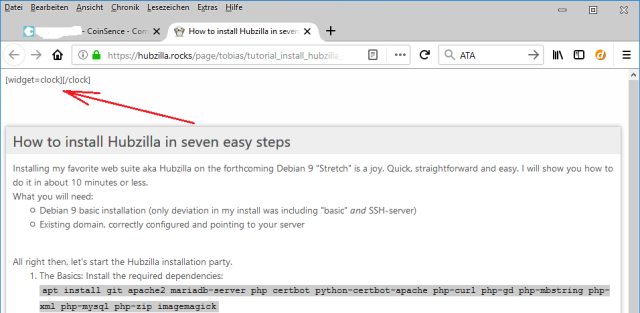widget=clock on "How to install Hubzilla in seven easy steps" guide
last edited: Mon, 09 Apr 2018 05:51:31 +0200
@h.ear.t | tobias
I get here https://hubzilla.rocks/page/tobias/tutorial_install_hubzilla_in_7_easy_steps ?
?
 .
.
I get here https://hubzilla.rocks/page/tobias/tutorial_install_hubzilla_in_7_easy_steps
[widget=clock][/clock] . S. Screenshot. I reckon, that isn't so your purpose  .
.
I meant that the process really works, as I could not test my correction. Will now. Plus move this one from a static page to an article. I think that makes sense, after all we've got that now and @Andrew Manning wrote such a nice overview even I now ... got "it".

 Alex
Alex
 neue medienordnung plus
neue medienordnung plus